Introduction
We are living in an era of accelerated change, where
disruptive technologies and immerging uncertainties are affecting personal
lives, business environment, and national and international policies. In these
situations, foresight research and methods implementation at the organizational
and national levels come into prominence to foresight future scenarios
and anticipate targeted horizons. Foresight has been defined as a “systematic,
future-oriented, analytical and interactive
process that partly contributes to shared visions concerning long-term
developments within science, technology, business and
society and partly facilitates the alignment of relevant stakeholder groupings
around desirable developments through relevant strategies, decisions and
actions” [1].
Foresight
activities
support decision making in situations and areas that involve long lead times,
such as long-term labor market planning, education and training for future
skills development and anticipation. At the strategic level, foresight projects
have been traditionally used as a policy tool for priority setting in
identifying key strategies to be implemented, key areas of national priorities
to be achieved and how to make investments in an efficient and effective manner
towards the achievements of organizational or national goals. A substantial increase of interest in foresight studies
around the world has been registered during the last three decades. The biggest
number of studies came from countries like Japan, United States, United
Kingdom, Finland, Denmark, France, Germany and Russia, which have large and
longer foresight programs national wide. Limited foresight studies were
reported from developed countries like Brazil, Columbia and Iran. Only, very
limited studies were published in Arab countries like the MENA region, mainly
in the Kingdom of Saudi Arabia and the UAE [2-12].
Saudi
organizations in both public and private
sectors are operating within a national momentum driven by the 2030 Saudi
vision. The strategic goals set to achieve the vision are three folds: (a)
Diversification of the economic sectors and efficient localization of industries
(such as military, mining, renewable energy, and logistics services), (b) Vibrant Society
(through cultural transformations) and (c) Building an ambitious nation. To
achieve these strategic goals, the government launched 13 Vision Realization
Programs (VRPs) together with national strategies for industry and quality. The
realization of the vision requires economic and social transformations
associated with the fourth industrial
revolution (Industry 4.0) technological drivers.
In this national context, it is of particular importance to foresight the
skills, competencies and the jobs landscape required by the kingdom to achieve
its strategic goals.
The present study
falls within a national research project, with the aim to assess and measure
the readiness level of Saudi organizations to adopt and practice foresight
methods in their strategies to achieve the strategic goals set in the National
Vision 2030. Within this paper, we will discuss the relationship between
foresight capability
and quality management and organization excellence models. Essentially, it
attempts to answer the fundamental research question: “To what extent quality
management and organizational excellence approaches and models lead to enabling
and building future foresight capability of modern organizations?” It is
expected that the result of the project would support Saudi leaders and
decision-makers for priority-settings and identifying key strategies and
investments in human capital development through education, training, research
and innovation in areas related to future scenarios driven by the Saudi Vision
2030 and requirements of Industry
4.0 revolution.
Quality Management and Organizational Excellence Systems as Enablers to Foresight
For
the last decades, quality
management systems and
organizational excellence models such as the Malcolm Baldrige National Quality
Award (MBNQA) and the European Foundation for Quality Management (EFQM) have
been used by organizations worldwide to achieve and sustain excellent
performance through a systematic and holistic approach to managing the various
aspects of the organization.
Excellence can be used proactively as a modern management method for building
the future and sustaining governments and organization performance. Through a
set of fundamental principles and guiding criteria, excellence helps
organizations and governments to preserve the interest of the society, and to
build a happy future for communities
and providing them with the conditions to thrive, prosper and enjoy high
quality of life standards [13].
The
new organizational excellence approach stimulates governments to build their
plans and goals continuously without stopping at the point of achievement or
satisfaction of successful implementation to ensure the economic, social and
environmental long-term
sustainability. Government entities should
implement excellence models to develop their future anticipation capabilities
through using future foresight tools to identify continues future trends and
global directions. This helps the government entity be able to predict, analyze
and respond to the global and future changes to create its future readiness
through continuous redefinition of existing business models supported by new
and advanced
technology driven by digital disruption of Industry 4.0.
Excellence has been used to help organizations realize ambitious visions and
strategic objectives. Vision Realization through foresight projects is an
essential criterion that excellence models address [13].
Readiness
and preparedness for the future can be considered as a powerful predictor for
becoming an outperformer in the business, for attaining superior profitability
and for gaining superior excellence [5].
Foresight has been used as a powerful tool to help organizations Operate more effectively in today’s environment of rapid, highly complex, often unpredictable changes in technology, social and economics. Organizations readiness to foresight can be measured using foresight maturity models such as the Grim`s Foresight Maturity Model [14]. This model which has been widely used in the open literature is a set of best practices that ensure that the organization develops a robust, useful, and comprehensive approach to take charge of the change and anticipate desirable future scenarios. The model divides foresight activities into six fundamental disciplines as shown in Table 1 where each discipline can be assessed within five levels of maturity (ad-hoc, aware, capable, mature, world class).
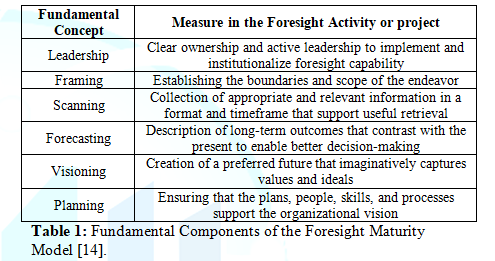
Table 1:Fundamental Components of the Foresight Maturity
Saudi
organizations either in public or in private implement quality management
systems (ISO 9001:2015) and organizational excellence model (King Abdul-Aziz
Quality Award - KAQA) to achieve performance excellence in line with their
strategic goals and objectives. This is mainly driven by the momentum of the
2030 Saudi vision and the government`s official approval of the national
strategy for quality early 2019. In the present study, we were interested to
investigate whether the implementation of such quality systems and
organizational excellence model would give an indication of the organization`s
readiness and capability
to adopt foresight for future opportunities and targeted horizons as prescribed
by the vision 2030. For that purpose, the researchers used Figure 1 to make a mapping between the fundamental concepts of
quality management adopted by QMS, ISO 9001:2015, the organizational excellence
concepts and the foresight concepts as defined by Grim Maturity Model.
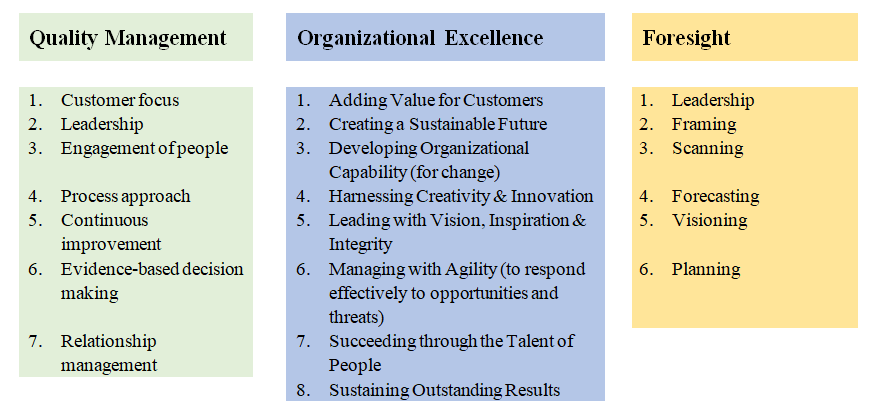
Figure 1:Mapping between Quality Management, Organizational
Research Methodology
The
present work was initially dedicated to measure the readiness level of Saudi
organizations towards the implementation of
foresight as a strategy to achieve the goals of the national Saudi vision 2030.
The perceptions of both management and operational employees towards this issue
were measured through a survey administered online to Saudi organizations. The
main objective of the study was to report on the views and experiences of leadership
management and staff members regarding foresight
implementation as means to achieve the objectives of the 2030 Saudi vision. The
survey consisted of several parts:
·
Part
1-Demographic characteristics (respondents’ characteristics: position in the
organization, educational level, age, gender, professional experience) and
(organization characteristics: organization`s size, business sector, regional
location in the kingdom, adoption of foresight manager, quality manager at the
organization, ISO certification status of the organization, national quality
award participation, and the development of a strategic plan in line with the
2030 vision).
·
Part 2 -Saudi
Organizations readiness to implement foresight.
·
Part 3-Degree of
knowledge and implementation of foresight methods.
·
Part 4-Barriers
to foresight implementation in Saudi organizations.
·
Part 5-Additional
information and personal comments from respondents.
The survey
questionnaire was distributed to major Saudi organizations from government and
the private sectors during March 2020 online, through the network of students
and graduates of the Master program in quality engineering and management, who
were from leadership of Saudi organizations from different regions of the
kingdom. Of about 300 questionnaires sent, 221 questionnaires
were received, which means a response rate of 73.67 %. More details about the
research survey instrument and the research methodology can be found in Al-Homaid
(2020) [10].
In
this paper, we will discuss only the results related to the research question
related to foresight capability and quality management and organizational
excellence models implementation.
Results and Discussion
Analysis
of the Validity of the Results
In
exploratory survey investigations, validity and internal is measured by
calculating Cronbach’s alpha coefficient. A value of Cronbach’s alpha greater
than 0.7 indicates homogeneity
and consistency of the survey element and validity of its results. In the
present study, the Cronbach coefficients of the survey elements are shown in Table 2, where it can be seen that high
values were obtained, indicating the reliability of the survey and the validity
of the results.
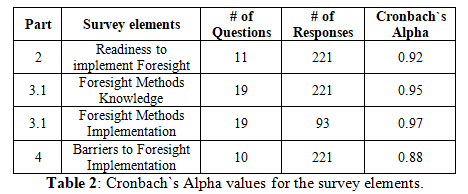
Table 2:Cronbach`s Alpha values for the survey elements
Participants
Characteristics
Table 3
summarizes the respondents profile characteristics. A careful examination of
this Table shows that respondents to the questionnaire are about 47.51% from
top management (9.05% CEOs, 16.29% Middle management
and 22.17% managers) and 14.93% from academic sector. It can be seen that a
percentage of 62.44 of respondents were from leadership and academic. 67.6% are
PhD and MSc holders with 41.6% are more than 40 years old and with extensive
professional experience, since 79.2% of the respondents have more than 5 years’
experience in the organization. These statistics give a confidence about the
study since the respondents turn out to be closely related to the decision
making process, with relevant professional experience in the business sector.
These factors are important in foresight projects which usually require some
knowledge and expertise in the business filed [1,2,5].
Figures 2
and 3 show the characteristics of
the sampled organizations. The organizations were ranked as either large
organizations (43.89%) or small and medium organizations (56.11%). The
government organizations represent 54.75% of the participant and the private
represent 18.55%. The business activities were distributed between educations
and training with 26.24%, Military with 9.95%, industrial sector with 7.69%,
services with 7.2%, and healthcare
with 10.86%. The study was carried out national wide, where all the 13
administrative regions participated. The big majority of participants (88.69%)
came from the main cities of the kingdom (Riyadh, Makkah, Madinah, Dammam,
Qassim and Hail) where most of businesses and government departments operate.
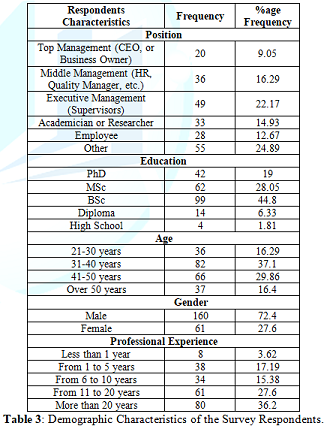
Table 3:Demographic Characteristics of the Survey Respondents
Foresight,
Quality Management and Organizational Excellence Principals Relationship
As
mentioned earlier, Saudi organizations either public or private implement
quality management systems (ISO 9001:2015) and the national organizational excellence
model (King Abdul-Aziz Quality Award - KAQA) to achieve performance excellence
in line with the strategic goals of the national 2030 vision. It has to be
mentioned here that a strong momentum towards quality management has been
created within the frame work of the vision and the subsequent government`s
official approval of the National Strategy For Quality (NQS) early 2019. In
this paper, we are mainly interested to investigate whether the implementation
of such quality systems and organizational excellence model would correlate
with the organization`s readiness to adopt foresight for future opportunities
and targeted horizons.
Figure 4,
which summarizes the results that measure these aspects, show that while 84.16%
of the organizations have a quality manager, 53.85% of them have undergone the
process of ISO certification to their management systems (QMS, EMS, etc.), and
only 20.36% of them implemented the national quality award criteria in their
businesses. A relatively high percentage of 78.28 of the surveyed organizations
have a strategic plan in line with the 2030 Saudi vision [15]. These statistics
give an indication of the level of readiness towards the adoption and implementation
of quality management systems and organizational excellence models, which
constitute an organizational enablers and catalysts for foresight
implementation, from the author’s point of view. The percentages of
organizations that had established a position of foresight in their
organizational chart was 37.10% and those who performed foresight projects
previously were 24.89%. These percentages would give a clear indication of a
relatively high level of readiness of Saudi organizations towards adopting
foresight as a strategy to achieve their goals. This is believed to be
associated with the high level of implementation of quality management and
organizational excellence approaches.
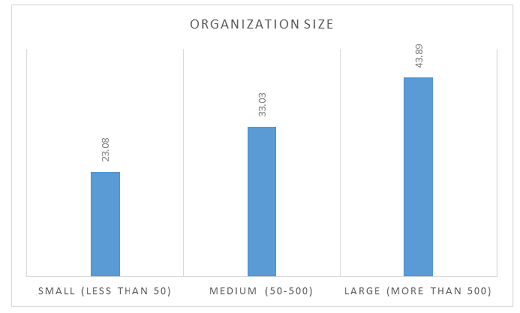
Figure 2:Respondents` Distribution by Organization Size.
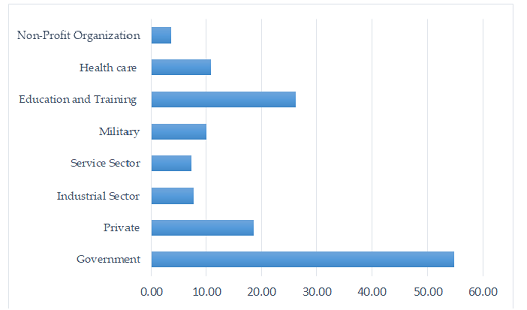
Figure 3:Respondents` by Organization Business Sector
In
order to determine if there is an association between the organizations`
characteristics (size, business activity, and King Abdul-Aziz Quality Award
implementation) and the existence of foresight department in the organization
Tabulated statistics and Chi-Square tests were used. The statistics in Table 4 show that organizations, which
have already established a foresight department, are equally distributed with
the size of the organization. No indication that a specific organization type
(size) has invested more in foresight though the national momentum driven by
the Saudi 2030 vision. From the survey data, the Pearson chi-square statistic
is 0.267 (with a p-value of 0.992) and the likelihood chi-square statistic is
0.267 (which also gives a p-value of 0.992>0.05). So, with an alpha
significance level of 0.05, we can conclude
that there is no significant association between the two variables
(Organization Size, Foresight department). Similarly, no significant
association between Organization business activity and foresight department,
was found with the Pearson chi-square statistic is 22.655 (with a p-value of
0.066) and the likelihood chi-square statistic is 23.136 (which also gives a
p-value of 0.058>0.05).
From
Table 4 the statistics show the organizations, which have already established a
foresight department with the implementation of the national excellence model
(King Abdul-Aziz quality award, KAQA). The Chi-square test performed for the
association between the two variables, with a Pearson chi-square statistic of
46.655 (with a p-value of 0.000) and the likelihood chi-square
statistic 47.362 (which also gives a p-value of
0.000<0.05). So, with an alpha significance level of 0.05, we can conclude
that there is a significant association between the two variables (the implementation
of the KAQA model and foresight activity in the organization). This would lead
us to conclude that quality management and organization excellence frameworks
implementation in Saudi organizations would be an enabler for successful
foresight implementation. This would lead us to pronounce that in order to
achieve their strategic objectives in line with the national vision 2030, Saudi
organizations to implement quality management systems such as ISO 9001:2015 and
the national quality award (KAQA) [16-19].
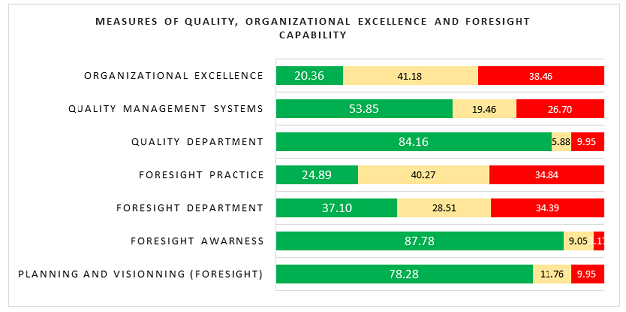
Figure 4:Measures of Quality Management, Organizational
Conclusions
Through
measurement of the readiness level of Saudi organizations to adopt foresight
activity as a strategic tool to anticipate future changes dictated by the 2030
national vision and Industry 4.0 drivers, this paper discusses the relationship
between foresight and quality management and organizational excellence
approaches. The paper shows that the role of quality
management and business excellence is pivotal to
the building of Saudi organizations` competitive advantage based on foresight
as one of its core competences. The statistical analysis of the surveyed
organizations shows that the degree of Saudi organizations readiness to adopt
foresight in their strategies is rather high and it is at an international
standard. The analysis shows clearly that quality management and organization
excellence frameworks implementation in Saudi organizations would be an enabler
for successful foresight implementation. This would lead us to pronounce that
in order to achieve their strategic objectives in line with the national vision
2030, Saudi organizations to implement quality management systems such as ISO
9001:2015 and the national quality award (KAQA). It is the authors` believes
that further discussion between experts would be required to explore the important
relationship between quality management, organizational excellence, and
foresight approaches for a better future world.

Table 4:Tabulated Statistics: Organization characteristics vs Foresight Activity
Acknowledgements
The authors acknowledge and extend their appreciation to the Deputy for Research and Innovation, Ministry of Education in Saudi Arabia for funding the present research work through the project number SS-116 under the Social Sciences Initiative.
References
- Andersen P and Rasmussen B.
Introduction to foresight and foresight processes in practice: Note for the PhD
course Strategic foresight in Engineering (2014) Technical University of
Denmark, DTU Management Engineering.
- Vinnari M, Tapio P and
Saarimaa R. Futures for Food (2013) Futures 83: 1-3. https://doi.org/10.1016/j.futures.2016.06.002
- Bakhshi H, Downing J, Osborne M and Schneider P. The Future of Skills: Employment in 2030 (2016) London:
Pearson and Nesta.
- Bakule M, Czesaná V and Havlícková V. Developing Skills Foresights,
Scenarios and Forecasts - Guide to Anticipating and Matching Skills and
Jobs, Vol. 2 (2016) Part A Luxembourg: Publications Office of the European
Union.
- Rohrbeck R and Kum ME.
Corporate foresight and its impact on firm performance: A longitudinal analysis
(2018) Technological Forecasting and
Social Change 129: 105-116. https://doi.org/10.1016/j.techfore.2017.12.013
- Rhisiart M, Störmer E and
Daheim C. From foresight to impact? The 2030 Future of Work scenarios (2017) Technological Forecasting and Social Change
124: 203-213. https://doi.org/10.1016/j.techfore.2016.11.020
- Gokhberg L and Sokolov A.
Technology foresight in Russia in historical evolutionary perspective
(2017) Technological Forecasting
and Social Change 119: 256-267. https://doi.org/10.1016/j.techfore.2016.06.031
- Algshami N. (2017). Future
foresight studies and their role in supporting decision making in UAE.
PhD Thesis, Sharjah University, The UAE
- Al-Shahri R (2018). A Foresight Vision to the National Security
in Saudi Arabia within the perspective of the 2030 Vision. PhD Thesis,
Naif Arab University for Security Sciences, Saudi Arabia.
- Al-Homaid T (2020a). Foresight Methods for Human Capital
Development By 2030 – A Case Study of Saudi Arabia. MSc Thesis, College
of Engineering, University of Hail, Saudi Arabia.
- Aichouni AB, Kolsi L, and
Aichouni M. The Engineering Students
Innovation Club Project for Human Capital Development in the areas of Industry
4.0 – From the Design to Implementation(2020) Industrial and Systems
Engineering Conference (ISEC)
https://www.researchgate.net/publication/339849285_Enhancing_Industry_40_skills_through_the_Engineering_Students_Innovation_Club
- Touahmia M, Aichouni M,
Alghamdi A, Kolsi L and Alzamil H. Foresight of Skills and Competencies Needed
for Quality Professionals in 2030: An Empirical Study of Saudi Arabia (2020) Eng Techn Appli Sci Res 10: 6176-6182. https://doi.org/10.48084/etasr.3713
- Zairi M. Shaping the future
of government through excellence: How the UAE Government has taken lead (2019) Int Jrnl Exc Gov 1: 1-6.
- Grim T. Foresight
Maturity Model (FMM) Achieving Best Practices in the Foresight Field (2009) Jrnl Futr Stud 13: 69-80.
- Saudi Vision 2030.
- Dubai Future Academy, (2018). Future foresights. (Report No.
012285-AR).
- Jones P. The futures of
Canada governance: Foresight competencies for public administration in the
digital era (2017) Canadian Public
Administration Journal 60: 657-681. https://doi.org/10.1111/capa.12241
- Kriechel B, Rašovec T and Wilson R. Developing Skills Foresights,
Scenarios and Forecasts - Guide to Anticipating and Matching Skills and Jobs,
Vol. 2 (2016) Part B. Luxembourg: Publications Office of the European Union.
- Riyadh Chamber (2019). Future Jobs in Kingdom of Saudi Arabia. The 9th Riyadh Economic Forum
Corresponding author
Mohamed
Aichouni, College of Engineering, University of Ha’il, Saudi Arabia, E-mail: m.aichouni@uoh.edu.sa
Citation
Aichouni M, Touahmia M, Alghamdi AS, Kolsi L and Al-Homaid T. Strategic technology foresight in organizations through quality management and business excellence concepts: a case study (2020) Edelweiss Appli Sci Tech 4:74-78.
Keywords
Strategic Foresight, Quality Management,
Organizational Excellence, Industry 4.0


 PDF
PDF